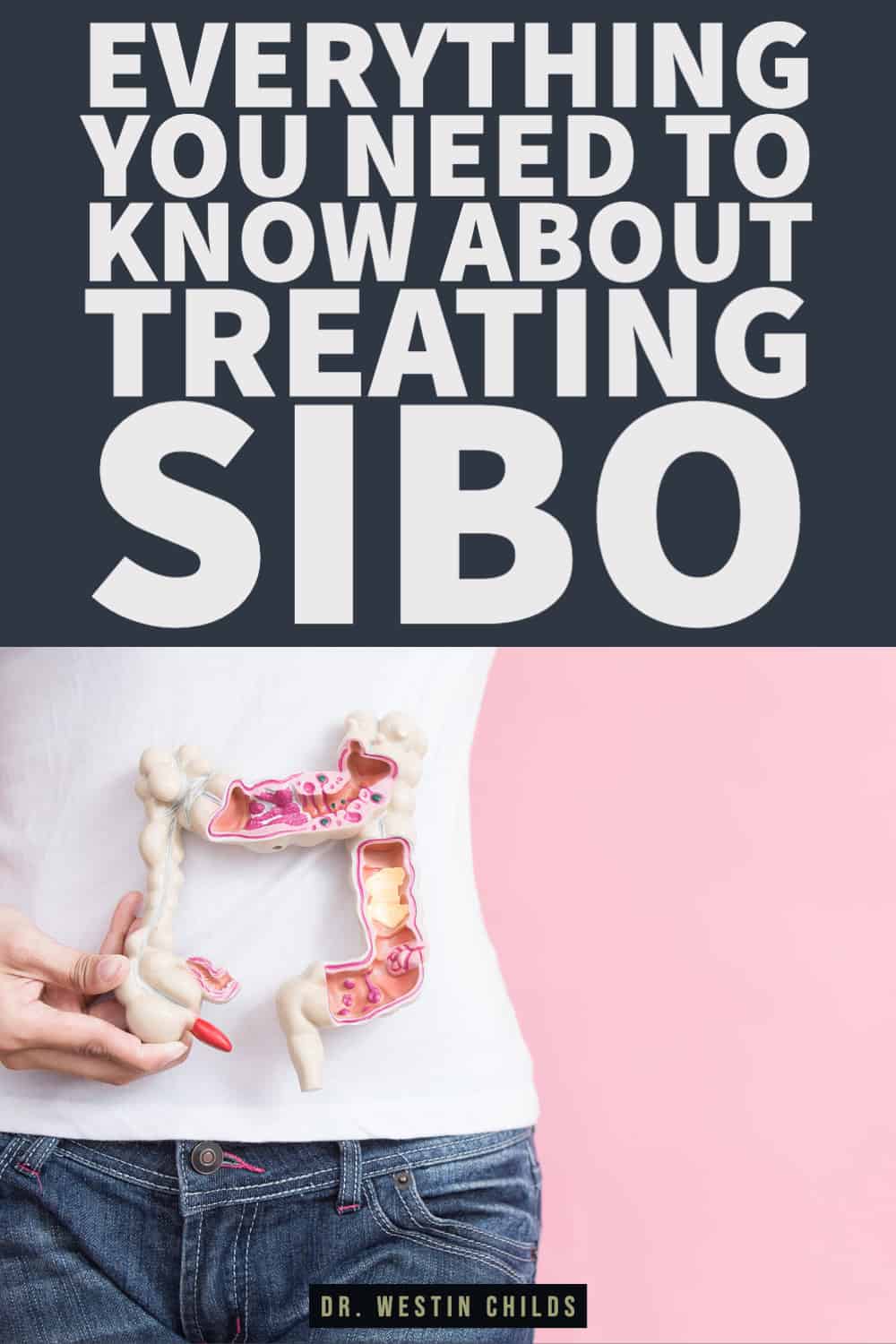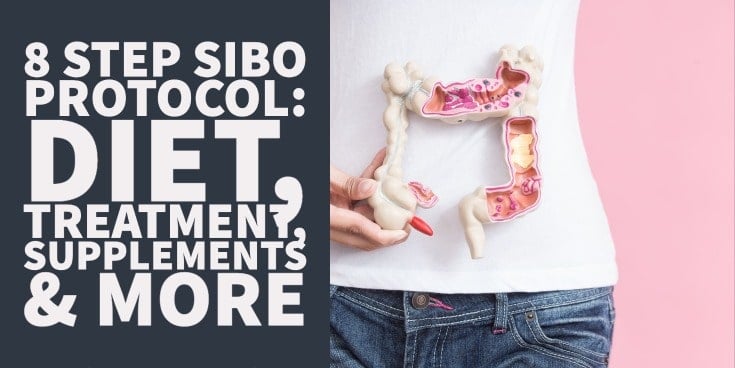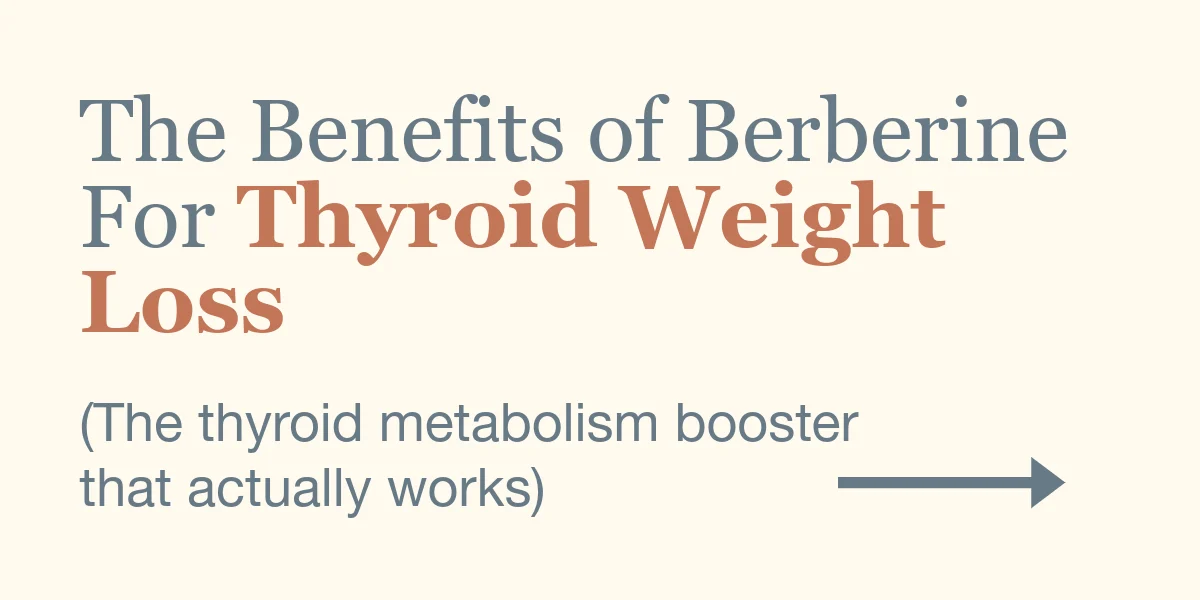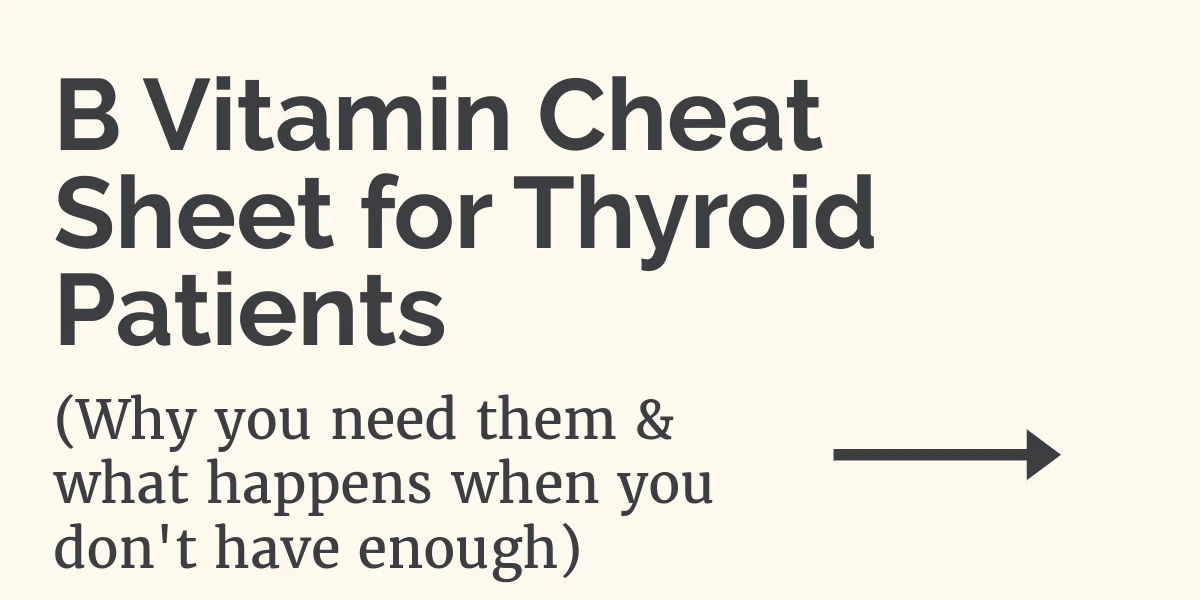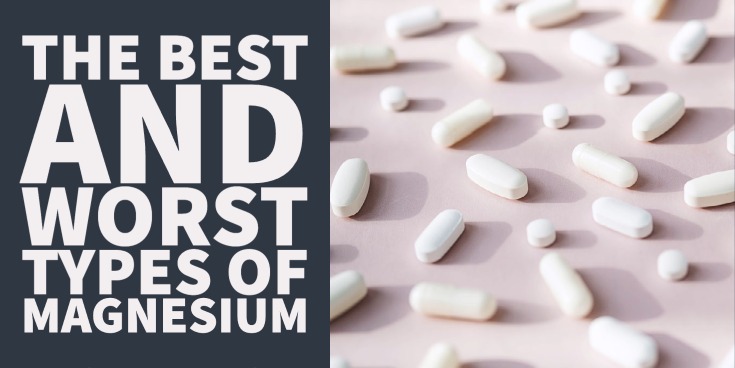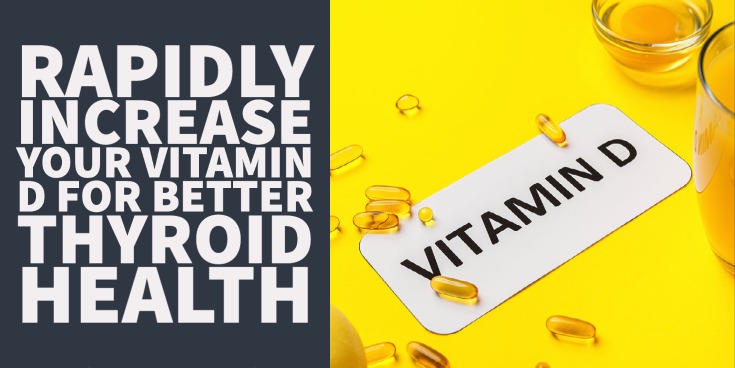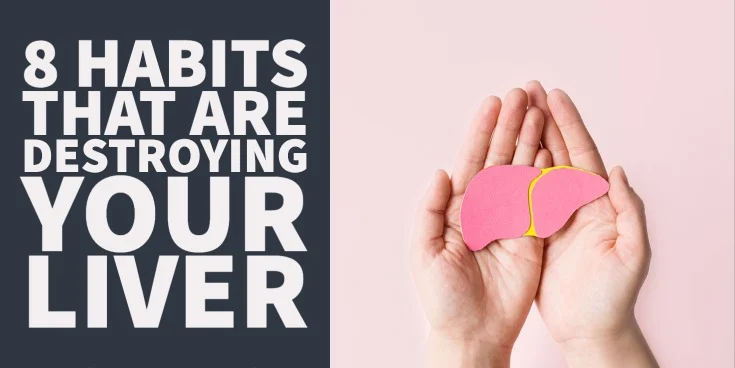Gas, bloating, and constipation.
What do these three things have in common?
They may be caused by SIBO, SIFO, or yeast overgrowth inside your body…
SIBO is an inflammatory condition that can cause problems in all systems in your body.
Because it can be so difficult to treat it requires a combination of a specific diet, special treatment (including antibiotics and/or herbal therapies), and certain herbs to help boost intestinal movement (AKA prokinetics).
All of these need to be balanced while trying to find and treat the CAUSE of SIBO.
If you don’t address the cause of the SIBO, then it is likely to come right back – even after treatment!
If you’ve been recently diagnosed with SIBO or you’re wondering what types of food you can/should eat then this is the post for you.
Did I mention that I also suffered from SIBO and used this exact treatment plan to heal myself?
Because I’ve been through this and have experienced the symptoms I’ve gone to great lengths to make this a VERY comprehensive guide…
We are going to dive into ALL of the following in detail:
- What you should and shouldn’t be eating
- All the symptoms of SIBO and what to do if you think you have it
- The connection between SIBO and Hypothyroidism that you don’t want to miss
- The Diet I use on my patients and have had significant success with
- How to treat SIBO (Using antibiotics and/or herbal therapies)
SIBO – Are you being Misdiagnosed or Mismanaged?
Why is SIBO such a big deal?
First of all:
It’s a VERY common condition.
As many as 4-78% of patients with IBS have SIBO (1) and as many as 50% of patients with hypothyroidism have SIBO (2).
Not only is SIBO incredibly common but it is often missed by many Doctors who aren’t aware of this diagnosis, treatment, or its implications on hormones.
I should also point out that SIBO (small intestinal bacterial overgrowth) is usually accompanied by small intestinal fungal overgrowth (AKA yeast overgrowth or Candida).
When was the last time your Doctor mentioned the word SIBO, SIFO, or yeast overgrowth to you? When was the last time your GI Doctor brought it up?
Second of all:
SIBO is an inflammatory condition in the GI tract.
It is caused by an overgrowth of bacteria where they shouldn’t be – in the small intestines.
It sounds like it would be good, but it isn’t.
This overgrowth of bacteria causes a number of issues:
- Decreased T4 to T3 conversion (3) (makes hypothyroidism worse)
- Increased inflammation in the GI tract (4)
- Constipation due to the production of methane gas (5)
- Changes in your GI Microbiome (6) (leading to changes in genetic transcription)
- Irritable bowel syndrome-like symptoms (7)
- Decreased digestion of food
- Acid reflux or changes in stomach acid (8)
- Malabsorption of nutrients
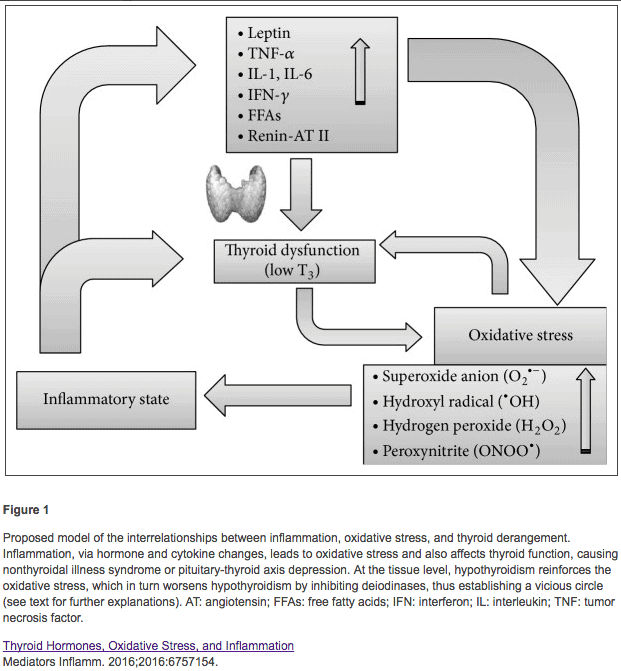
The list goes on…
It’s not as important to focus on what it leads to so much as what causes it.
If you have an idea as to what is causing SIBO in your body you will better be able to treat it.
And treating the root cause of SIBO is VERY important, because if you don’t treat the underlying issue then it is very likely to come back.
At the heart of the problem, most cases of SIBO are caused by slowing down the GI tract.
As the GI tract slows down, the food stays in the GI system longer which allows for more fermentation to occur.
As fermentation occurs your gut bacteria grow and grow, leading to overgrowth.
So what causes the GI tract to slow down?
- Hypothyroidism or Low T3 syndrome
- Insulin resistance, Diabetes mellitus (9), or nerve damage from high blood sugar levels
- Celiac disease (10) or gluten intolerance
- Getting older (11)
- Changes in stomach acid (as seen with proton pump inhibitors or hypothyroidism (12))
- Vagal nerve damage (13) (trauma, etc.)
- Autonomic nerve dysfunction
Basically, anything that may cause nerve issues, slow the GI tract, or lead to gut bacteria changes may predispose you to develop SIBO.
So, how do you know if you really have it?
SIBO Symptoms – What your Body is Trying to Tell You
While one of the best ways to diagnose SIBO is through a breath test which tells you how much hydrogen/glucose/lactulose (14) your bacteria ferment.
Unfortunately not every physician agrees with the diagnosis, so sometimes a Doctor may call and negative result positive and vice versa.
For a number of reasons, I will frequently use clinical signs and symptoms to start treatment and perform the breath test to confirm eradication.
In my opinion testing prior to treatment in EVERY patient isn’t always necessary, especially if your symptoms are spot on.
In more complex cases where the symptoms aren’t as clear cut, then it may be a good idea to START with testing.
Let’s say you don’t have a physician willing to work with you and you are trying to base your treatment on symptoms alone…
What should you be looking for?
- Gas and bloating (15), especially 30-60 minutes after a meal
- Bad constipation resistant to laxatives and herbal remedies
- Abdominal Distention
- Nausea or vomiting – especially after meals or
- Nutrient malabsorption (Chronic vitamin D deficiency, Vitamin B12 deficiency, etc. – especially if resistant to oral supplements)
- Unexplained abdominal pain or symptoms that coincide with irritable bowel syndrome (IBS)
- Gas and bloating after taking certain probiotics
- Constipation that is WORSE after taking certain probiotics
- History of extensive proton pump inhibitors or acid-blocking drugs
If you have any of these symptoms, especially if you have any of the medical conditions listed above – then you may consider jumping to treatment instead of performing the breath test first.
We are going to talk about treatment extensively later in this post – so, for now, sit tight because I want to make a quick point…
The Connection between SIBO and Hypothyroidism
Hypothyroidism is a VERY common cause of SIBO and SIFO and unfortunately, this is another condition frequently missed by conventional doctors.
Because this blog focuses on thyroid disorders and issues I would be remiss not to mention the strong connection between SIBO, SIFO, and hypothyroidism!
This connection is important for several reasons:
1. Many of you might be walking around with undiagnosed hypothyroidism or Hashimoto’s – Thyroid issues are VERY common (16) (the second most commonly diagnosed hormone imbalance)
2. Without treating the CAUSE of SIBO and SIFO it is very likely to come back, which means that in order to get rid of your SIBO you may need thyroid replacement treatment.
For these reasons I recommend that every patient who has SIBO/SIFO ALSO get tested for hypothyroidism if they have any of the following symptoms:
- Chronic fatigue (especially if you are sleeping 8 hours per night)
- Depression, anxiety, or mood disorders
- Changes in the menstrual cycle or other sex hormones
- Cold extremities including hands/feet
- Weight gain or weight loss resistance
- Hair loss, dry skin, acne, or loss of eyebrows
If you have any of these symptoms PLUS the symptoms of SIBO then it’s worth checking a complete thyroid panel to ensure that hypothyroidism isn’t the CAUSE of your SIBO.
The complete thyroid panel includes the TSH, Free T3, Free T4, Reverse T3, Sex hormone-binding globulin, and thyroid antibodies.
If you ALREADY have Hypothyroidism and you have the symptoms of SIBO then it’s worth checking these again to ensure that you are getting the correct treatment.
Most patients with Hypothyroidism may need thyroid medication containing T3 hormone to actually get symptomatic improvement.
Treating hypothyroidism is important because low thyroid can lead to a number of issues that may complicate GI function:
Low stomach acid – Thyroid hormone is involved in the production of Hydrochloric acid, low thyroid hormone = decreased digestion.
Decreased peristalsis – Thyroid hormone helps propel the intestinal tract forward, low thyroid hormone = slow movement of the GI tract.
Malabsorption of nutrients – Thyroid hormone is involved in the absorption of certain nutrients.
Ok – I think you get the point here:
If you have SIBO symptoms and hypothyroid symptoms then make sure you get your thyroid properly (keyword) evaluated.
SIBO and SIFO (AKA Yeast Overgrowth) – You really should be Treating Both
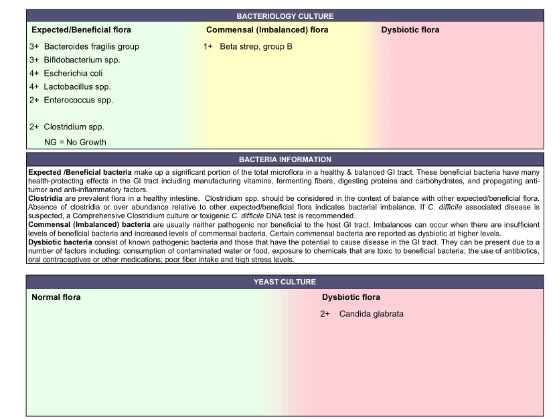
SIFO aka small intestinal yeast overgrowth frequently tags along with SIBO.
In my experience, this occurs more often than not – which means that treatment should be targeted toward BOTH.
Yeast overgrowth syndrome or SIFO was previously only a condition that “alternative” practitioners started to treat, but research shows that as many as 25% of patients with unexplained GI symptoms (17) have too much yeast in their intestines.
So if SIBO is an overgrowth of bad bacteria, SIFO is an overgrowth of yeast and fungus.
Many of the conditions that predispose patients to develop SIBO also cause SIFO.
This study showed that intestinal dysmotility (18) (as seen in hypothyroidism and with PPI use) predisposes patients to develop both SIBO and SIFO.
The problem with yeast overgrowth is that there isn’t a defined “amount” that signifies you have TOO much.
This means for now you are somewhat limited in terms of our ability to diagnose the condition. This is one of the main reasons why conventional doctors tend to ignore the condition.
For this reason, I recommend that patients with SIBO also make sure they treat SIFO and yeast overgrowth.
I will talk about that in the treatment section, but the good news about using herbs and supplements is that most of these supplements not only kill bacteria but they ALSO kill fungus and yeast.
Unfortunately, many of these yeasts can become resistant to the “typical” treatments because so many patients have already undergone “candida” type cleanses.
In reality, many of these patients probably thought they had yeast overgrowth when they really had SIBO and just weren’t completely treating the problem.
In these instances, it can be helpful to use an advanced GI stool test to characterize the type of yeast you have in your intestines and to specifically determine what types of supplements and medications YOUR yeast is sensitive to.
See below:
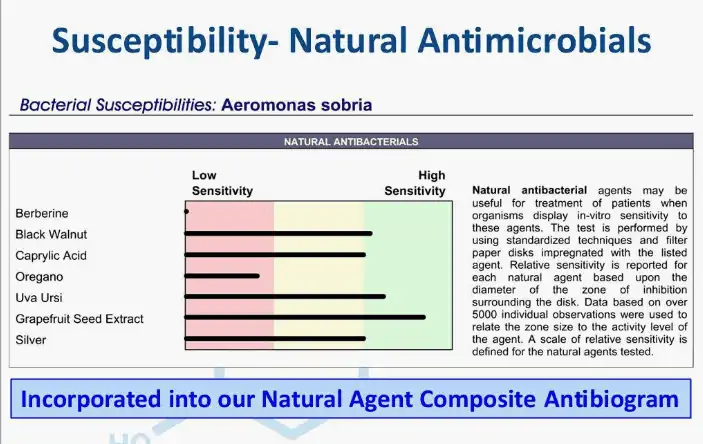
In the case above you can see that this particular bug is resistant to Berberine and Oregano – both of which are commonly used to treat SIBO and SIFO.
In this situation using the following supplements might be more effective: Black walnut, caprylic acid, grapefruit seed extract, and silver.
This should help highlight the importance of sensitivity testing in certain individuals that aren’t improving on “standard” therapy.
It’s also important to point out that this is exactly how Doctors in hospitals target antibiotic therapy for systemic bacterial infections.
They grow the bacteria on culture to figure out exactly what it is sensitive to, and then use those antibiotics for the best results.
SIBO Treatment: How to get rid of it and keep it away
Remember that for the MOST effective treatment you should make sure to not only treat the overgrowth of bacteria but to almost focus on finding and reversing the CAUSE of your SIBO, to begin with.
That means matching up the most likely cause to the treatment:
If your SIBO is due to insulin resistance then you must focus on the treatment options below plus take steps to reduce your blood sugar and insulin levels.
If your SIBO is due to hypothyroidism then you must focus on the treatment below PLUS managing your thyroid.
Etc. Etc.
If you’re curious as to which bacteria or other bugs might be potentially harmful to your GI tract I have included a list below:
- Blasocystits hominis
- Candida albicans and other yeasts
- Citrobacter freundii
- endolimax nana
- entamoeba histolytica
- giardia lamblia
- klebseilla pneumoniae
- proteus mirabilis
- pseudomonas aeruginosa
- helicobacter pylori
- group a streptococci, streptococcus pyogenes
- gamma strep and enterococcus
- staphylococcus aureus
- Aeromonas hydrophila
- dientamoeba fragilis
Because every single person is unique it can be difficult to determine WHICH bacteria is causing the problem in you.
Instead of focusing on which bacteria is causing the issue, focus on reducing the overall bacterial burden and putting the right foods in your body.
By doing this you will allow your body to take over and repopulate your intestinal tract with the beneficial bacteria necessary for optimal health.
Just remember that killing the bacteria is part of the problem once you’ve done that you need to focus on repopulating the GI tract with beneficial bacteria, healing the intestinal lining, taking the right supplements, and eating the right foods:
1. SIBO Diet + Food List & Guidelines
Diet is a critical step in healing SIBO.
Let me explain:
The overgrowth of bacteria in your small intestines like certain types of food and they use these products to grow.
The fermentation of certain foods is what leads to the symptoms.
So the goal of your diet is to AVOID these foods to basically “starve” out the bacteria.
You can “starve” them out by avoiding the food they feed off of or by adding in intermittent fasting (preferably both).
While starving them you will also be taking either herbal antibiotics or prescription antibiotics to further kill off the overgrowth.
Yes, you will be killing good bacteria in the process, but by using prebiotics you can help to only grow back certain beneficial bacteria.
There are multiple diets used to help treat SIBO and each has its advantages and disadvantages.
Ultimately you will find a lot of inconsistencies between the diets, so the main goal here should be to stick to one of the diets and your treatment protocol very closely.
If you aren’t seeing symptomatic improvement then you can switch up the diets.
The diets that tend to work the best for SIBO include:
- Low FODMAP’s Diet
- SCD Diet
- GAPS Diet
I’ve included the dietary recommendations I give to my patients in my clinic which is a combination of the SCD diet, GAPS diet, and low FODMAP diet.
I’ve found this diet to be effective in MANY patients:
*Note that these foods should be organic, grass-fed or free range if possible
Eat These Foods
Protein
(3-5 servings per day)
- Poultry: Chicken, Turkey, Wild game, Lamb
- Seafood: Wild Salmon (Canned, Fresh or Frozen), Small Halibut, Shrimp
- Eggs: Up to 3 Per Day **(Choose, Organic Free Range Eggs)
Fat
(2-3 tablespoons per day minimum)
- Oils (Cold): Olive oil, Flaxseed, Sesame
- Oils (Hot or Cold): Coconut, Grapeseed, Avocado oil, MCT, Fish oil, Hemp oil
- Nuts and Seeds:
- Nuts: Almonds, Pumpkin seeds, Peanuts, Sunflower seeds, Pecans, Macadamia nuts, Pine nuts, Walnuts
- Nut/seed butters: almond, cashew, pecan, macadamia, walnut
Veggies
(4 servings per day minimum)
- Broccoli, Brussels sprouts, Cabbage, Carrots, Cauliflower, Celery, Cucumber, Green beans, Eggplant, Endive, Kale, Kohlrabi, Leeks, Lettuce, Mushrooms, Mustard Greens, Parsley, Peppers (any), Pimento, Pumpkin, Radishes, Rutabagas, Scallion (green part only), Sauerkraut, Spinach, Squash, Tomatoes, Turnips
- **No onions or garlic**
Note: All vegetables should be eaten raw or lightly blanched (cook until color is vibrant). If you have digestive problems always blanch or steam your vegetables before eating.
Fruits
(2-3 servings per day)
- Currants, Guava, Limes, Raspberries, Strawberries, Loganberries, Kiwi, Gooseberries, Melons, Oranges, Tangerines, Rhubarb, Mangoes, Pineapple, Grapes, Lemons, Papayas, Blackberries, Cantaloupe, Prunes, Peaches
Serving size for fruits:
- Berries 1 1/2 cup
- Melons 2 cups
- Plums 2 small
- Others 1 medium size
Dairy
(2-3 servings per day)
- Kerrygold Butter, Ghee, Sour cream, Yogurt (Homemade only)
- **Must be raw or organic**
Other
(Additives)
- Herbs/spices, Mustard (no garlic), Vinegar (no balsamic), pickles, wasabi, tobasco, ginger, Mayonnaise (sweetened only with honey), Honey (only from alfalfa, cotton, clover, raspberry), stevia (pure and in small amounts)
Generally, I recommend that patients continue with the diet for 2-3 months while they are simultaneously undergoing treatment as outlined below.
Once the bacteria and fungal load have been decreased significantly with fasting, dietary changes, and antifungals/antibiotics, the reintroduction of fermentable foods is the necessary next step.
The reintroduction of foods high in prebiotics is required to help grow beneficial bacteria and yeast to repopulate the GI tract with healthy flora.
If the reintroduction of foods leads to negative side effects (gas, bloating, etc.) then further treatment and changes in antibiotics/herbs/etc. may be necessary.
If you fall into this category then you may need to seek further advanced testing to find sensitivities or stay on a prolonged treatment regimen.
2. Probiotics
Probiotics are a necessary part of SIBO treatment.
They act to rebalance the bacterial load and result in local environmental changes in the GI tract which allow for the normalcy of the GI tract.
The antibacterials (herbal or prescription) will kill both good and bad forms of bacteria.
Because of this, it is important to try and replace the lost bacteria.
Consider this study (19) which showed that dietary changes altered levels of bifidobacteria species in the gut (these are not necessarily the guys you want low in your system).
Having said that there are a few things to consider when using probiotics:
- Not all probiotics work for every person
- Some probiotics contain prebiotics (remember prebiotics help bacteria GROW which is not always good)
- Some patients do better when adding probiotics later (after using herbal and prescription antibiotics)
- Some patients do better STARTING with probiotics and using them throughout the treatment
- Generally, soil-based organisms are better tolerated than conventional lactobacilli and bifidobacteria-based probiotics
- Probiotics should be pulsed in high doses on occasion, used sporadically, and switched up every now and then – whenever possible try to avoid routine when using them
- Probiotics are NOT a substitute for fermented foods (more on this later)
In reality, you should be able to tolerate different forms of probiotics through your treatment.
Generally, during the treatment phase, I prefer to use soil-based organisms.
During the repopulation phase (as long as patients can tolerate it) I will also add in lactobacilli and bifidobacteria-based probiotics.
This is also around the time I start using prebiotics to help naturally build up the beneficial bacterial levels.
Further elaboration is below:
Soil-based organisms (heat-resistant probiotics)
Generally, in SIBO, soil-based organisms tend to be better tolerated than other forms of probiotics.
For this reason, I tend to use these probiotics earlier in the course of treatment (even along WITH antibiotic therapy).
Some soil-based organisms do contain prebiotics which certain patients can be very sensitive to.
If you fall into this category you may need to hold off on the addition of antibiotics until your bacterial load has been reduced by dietary changes and antibiotics.
List of soil-based organisms to consider using: Thyro Biotic, Primal defense ultra, probiotic 3 AOR, SBO probiotics by Dr. Axe.
You may notice that these probiotics have tons of great reviews, probably owing to the fact that many patients unknowingly have SIBO.
Lactobacilli and bifidobacteria-based probiotics
Even though some patients may actually get WORSENING symptoms when using these in the early stages of treatment they tend to be tolerated once the bacterial load has decreased significantly.
In my own personal treatment (because I didn’t know any better) I used these with antibiotic therapy and I did just fine – so I know that some people will be able to tolerate it.
Despite this, I generally recommend adding these probiotics later on in the course of treatment and AFTER the use of soil-based organisms.
Beneficial Yeast
I’ve also had success in treating certain patients who have SIBO with beneficial yeast.
In this case, I am specifically referring to Saccharomyces boulardii.
The idea is that this yeast can help out-compete the overgrowth of bad bacteria for the valuable real estate that is your GI tract.
This doesn’t work in all patients, but if you find yourself extremely sensitive to other probiotics then this may be an alternative worth considering.
3. Antibiotics
When I refer to antibiotics in this section I am referring to prescription antibiotics.
It’s worth pointing out that many patients can do WITHOUT prescription antibiotics.
Some studies have shown (20) that herbal remedies can be useful in treating SIBO even in patients who previously failed treatment with Rifaximin.
Having said that, Rifaximin + Neomycin is a very potent combination, and the study quoted above only used 1 antibiotic.
For more information on using antibiotics see the recommendations below:
In my patients, I generally start with herbal therapy + dietary changes + all the recommendations below.
Using this therapy I’ve found success in about 85-90% of patients.
Many patients can’t tolerate herbal remedies for a variety of reasons and for these patients then it’s worth using prescription antibiotics.
And if you are wondering why we are using prescription antibiotics to treat a problem that may have been CAUSED by prescription antibiotics let me explain:
Antibiotics have a spectrum of activity against certain types of bacteria.
The antibiotics we are using are more specific to the overgrowth of bacteria seen in SIBO versus being a very broad-spectrum antibiotic that kills everything.
These antibiotics can still cause problems (I’ve seen Rifaximin trigger c. diff colitis), but if used correctly they can be very beneficial.
It’s also worth pointing out that if you are going to use antibiotics then I generally recommend the concurrent use of prescription antifungals.
The herbal therapies we are going to talk about below have activity against BOTH, but the prescription antibiotics do not.
My recommendations for using antibiotics for SIBO:
- Rifaximin 1,200mg x 14 days if used as monotherapy – The success rate of ~90% (21)
- Rifaximin 1,200mg + Neomycin 1,000mg x 10-14 days (does not necessarily have anti-fungal activity)
- Rifaximin 1,200mg + Neomycin 1,000mg x 10-14 days + Diflucan 100mg x30 days <—- my preferred combination
These therapies and combinations can be used multiple times if symptoms recur.
But if used appropriately with the recommendations below multiple treatment regimens are not often necessary.
4. Herbal Antibiotics and Supplements
These herbal antibiotics and supplements are a *necessary part of treatment for SIBO and my preferred route to take if at all possible.
On this treatment, you should notice an improvement in your symptoms within 2 weeks.
If improvement is not seen within 2-4 weeks then you should re-evaluate your treatment plan to see what the issue is.
One of the benefits of using herbal therapies and antibiotics is that these have both antibacterial AND antifungal action.
This means that you will likely be treating SIFO/yeast overgrowth in addition to SIBO.
Below I am going to list several herbs that have been shown to have antifungal and/or antibacterial action:
Phase 1 (Weeding and Reducing Bacterial Burden)
- Berberine 500mg daily (studies here) (22)
- Oregano oil 600mg daily (studies here) (23)
- Caprylic acid 400mg daily (studies here) (24)
- Undecylenic acid 125-250mg daily (studies here) (25)
- Thyme oil 100-200mg daily (studies here) (26)
- Grapefruit seed extract 100-200mg daily (studies here) (27)
Instead of purchasing these individually, you can get the majority in these 2 products: Candibactin Ar, Candibactin Br, Caprylic acid by NOW, and AC formula II.
The combination of Candibactin Ar/Br by itself is very potent especially when in combination with AC Formula II.
Recommended dosages and treatment length:
- Candibactin ar/br (Max dose as recommended on bottles, titrate up as tolerated) x30 days
- Candibactin ar/br x30 days + AC Formula II or Diflucan x30 days
- Candibactin ar/br x30 days + Prescript assist + AC Formula II x30 days at maximum dosages or until symptoms decrease (you should notice a decrease within 2 weeks)
- For constipation-predominant SIBO or IBS, Atrantil has been very effective in helping patients both reduce gas and bloating and improve bowel movements, so I generally recommend the addition of Atrantil if you fall into that category. You can see studies showing the benefit of Atrantil here (28).
- *note that repeat doses may be necessary for complete eradication
After the bacterial burden has been decreased it’s time to move on to the next phase…
Phase 2 (Rebuilding and Reducing Inflammation)
After 1-2 rounds (or however many rounds are necessary) you can move on to the next required steps of healing the intestines from the damage of the overgrowth.
Supporting the immune system:
- Zinc (studies here) (29)
- Selenium (studies here) (30)
- Vitamin D (studies here) (31)
- IgG from Bovine colostrum (studies here) (32)
This step is helpful in building up the immune system which can become dysregulated when the microbiome is disturbed.
This immune dysfunction is what is implicated in autoimmune diseases (33).
These are the brands that I use in my clinic: zinc, selenium, vitamin D, and bovine IgG.
Nutrients to rebuild intestinal lining:
- Oral glutamine to rebuild intestinal lining (6 grams up to 3x per day) – studies here (34)
Glutamine helps to rebuild the tight junctions between epithelial cells in your intestinal lining.
This is a fancy way of saying it helps prevent and heal “leaky gut”.
This is what I use: L-glutamine powder.
Supplements to promote liver detoxification and bile flow:
- Curcumin/Turmeric (studies here) (35)
- Ginger (studies here) (36)
- Milk Thistle (studies here) (37)
These supplements help to boost liver function and help eliminate products of a dysregulated GI tract like LPS (38) (which can promote inflammation).
Supplements I recommend: Curcumin, Milk thistle combo.
Exercise for butyrate production and detoxification:
Exercise can help promote butyrate production and modify intestinal bacteria (39).
So even though you may not necessarily think it’s important for your GI tract you would be wrong!
Make sure you are exercising during your treatment because it can also help promote bowel movements (40) (I told you we were going to be comprehensive!) as well as change your microbiome.
5. Prokinetics & Treating Constipation to Promote Bowel movements
Prokinetics can be helpful in the treatment of SIBO because they help to propel the GI tract forward and to help with bowel movements.
The word prokinetic means pro movement and in that case, it is referring to the movement in the GI tract.
This is especially important because methane gas (which is produced from bacterial overgrowth) slows down (41) and almost paralyzes the GI tract.
Prokinetics are also very important to promote bowel movements because every time you have a bowel movement you are dumping out excess bacterial load in the form of stool.
That means treating your constipation is extremely important when treating SIBO.
In fact, I joke around that I have a strict “no constipation practice” and I mean it.
Constipation needs to be treated at all costs, and to me, that means having 1 large bowel movement EACH and EVERY day.
Anything less frequent than that is unacceptable.
So what prokinetics should you consider using?
I generally recommend using Triphala which is an ayurvedic herb.
Triphala helps promote GI motility (42) while also helping to balance intestinal flora which makes it a potent addition to your SIBO protocol.
In early phases of treatment and in cases of severe constipation it’s best to use Triphala in combination with magnesium citrate like this.
In later phases of treatment, I prefer to use this supplement which contains other nutrients to help heal the gut lining.
It’s also worth pointing out that there are prescription prokinetics that you can also use though I don’t frequently recommend them unless in extreme situations.
These include Erythromycin, Reglan, or Propulsid.
In addition to managing your bowel movements with prokinetics there are also several other things you should consider using if you are not having 1 large bowel movement per day:
- Magnesium Citrate (200-2,000mg per day) – Take at night until you have 1 large bowel movement in the morning
- Ascorbic acid or Sodium Ascorbate (up to 5 grams per day) + Magnesium citrate (up to 2,000mg per day) – Take in the morning until one large bowel movement
Bowel movements help to decrease bacterial load and just help patients feel better in general!
6. Fermented foods
I personally attribute a huge portion of my gut healing and SIBO treatment to Kefir which is a fermented dairy product.
Fermented foods in general offer AMAZING health benefits.
In fact, 1 cup of Kefir contains multiple strains of beneficial probiotics and beneficial yeasts (43) in an amount that blows away most over-the-counter probiotics.
In a sense, these fermented foods are really the probiotics that nature intended us to have.
To give you an idea of the power that these guys contain, let me share some benefits:
- Kefir grains have antimicrobial activity (meaning they act as antibiotics in your GI tract)
- They have anti-inflammatory effects
- Kefir promotes a healthy distribution of microbiota in your GI tract
- It stimulates and boosts the immune system
- And it can also help lower cholesterol (studies and benefits here) (44)
On my personal journey, it wasn’t until I started to add Kefir to my diet on a daily basis that I truly noticed a change in my digestion.
I had fixed the majority of my GI-related symptoms through the interventions noted above, but still had some side effects that were made right through the daily use of Kefir.
I can make a post detailing exactly how to use Kefir, how to grow your grains, etc. but for now, if you are interested I recommend purchasing your grains and using it on a daily basis – these are the grains that I used.
It’s also worth pointing out that even if you can’t tolerate dairy products you still might be able to tolerate kefir (and don’t worry I will list more fermented food products below).
The fermentation process helps eliminate lactose in the milk which makes it much more gentle and digestible for most people.
If you can’t tolerate Kefir or fermented milk products then you can consider using any of the following:
- Kombucha
- Sauerkraut
- Natto
- Kimchi
- Tempeh
The majority of the benefits come from the fermentation process which allows the production of a variety of beneficial yeasts and probiotics that are then consumed with the food.
Because science is limited in how many probiotics we can create in a lab and store in supplements, I recommend adding fermented food (which contains probiotics you can’t get anywhere else) in some form during your treatment.
Please note that you may have to add fermented food LATER in your treatment (the earlier you can tolerate it the better, though) because sometimes the fermented foods can cause worsening symptoms.
Fermented food can be very fermentable by your bacterial overgrowth and they may have a field day with it.
7. Prebiotics
Most people tend to focus on the PRObiotics and ignore the PREbiotics.
Prebiotics help certain bacteria GROW in the GI tract.
That may sound funny when we are talking about an OVERGROWTH of bacteria, so why would we want to grow more bacteria?
The truth is that SIBO is an overgrowth of bacteria you don’t necessarily want a lot of – not that it’s pathogenic necessarily, but it’s also not beneficial.
Fortunately, we have a couple of ways to help CERTAIN and BENEFICIAL bacteria grow by giving them certain foods that only they like.
So, by selectively giving these bacteria only food they can eat, we can help them grow and outcompete the bad guys.
Make sense?
This makes prebiotics a necessary step to treatment in SIBO, but one that should generally be taken AFTER the weeding and killing phase is completed.
In general, I recommend adding prebiotics as early as you can tolerate them, but if you aren’t sure when to add them then it’s generally acceptable to add them after you’re done using antibiotics (either herbal or prescription).
So what kinds of bacteria are we talking about and which ones do you want to selectively grow?
Below I’ve included a list of beneficial “ancestral” bacteria that have all shown to have beneficial effects on humans, and next to them I’ve given you examples of certain foods that they predominately feed off of.
That means if you want to grow a certain type of bacteria in your GI tract you simply feed it the type of food it likes to eat:
- Actinobacteria (45) – To boost these species consider using the prebiotic fructans
- Clostridia cluster IV (46)
- F. Prausnitzii (47) – Feed this guy Pectin (not starch)
- Rhuminococcus (48) – Feed this guy starch
- Roseburia (49) – These guys like to eat oligosaccharides
- Eubacteria rectale (50) – He likes to eat Inulin
- Bacteroides vulgatus (51) – He also likes inulin (and fat)
- Alistipes putredirius (52) – This guy likes lignans
Don’t let this information freak you out.
I’m just providing the information to show you that these guys are important to your GI health and your overall health.
The important point is that you can feed these guys to help them grow.
Generally, I recommend starting out with at least 1 different prebiotic and increasing up to 3 at once if tolerated.
To get started I generally recommend easing your way into 1 or more of the following prebiotics: Inulin, Inulin + Acacia, Pectin, and/or Resistant Starch.
Remember when starting out – go slow with the prebiotics!
If they make your symptoms worse, then back down to an amount that is tolerable and continue a slow titration.
8. Intermittent Fasting
As I mentioned previously there are a few ways to kill bacteria.
1) To selectively starve them out by eating food that only you can digest and food that they CAN’T digest.
2) Completely avoid food to starve them out <—- AKA intermittent or prolonged fasting
I frequently recommend adding intermittent fasting as a therapy to the treatment of SIBO (and multiple other disease processes).
Intermittent fasting will help decrease your bacterial load (53) but it will also help with several other areas:
- Reducing inflammation (54)
- Helping your body burn fat (55)
- Increase immune system in the GI tract (56)
- Help balance other hormones in the body (57)
If you haven’t tried intermittent fasting as part of your therapy then going without food for 14-16 hours 2-3x per week can have a big impact on decreasing your bacterial load and helping to reduce the symptoms of SIBO.
Wrapping it up
Remember that SIBO is a serious condition that is often missed by many physicians or misdiagnosed as irritable bowel syndrome.
This is a serious problem because it promotes systemic inflammation, and intestinal dysfunction and can predispose you to develop autoimmune diseases and other health issues.
Because of this serious attention should be given to SIBO if you suspect you might have it.
If you have the clinical signs and symptoms of SIBO it is worth looking into treatment prior to testing, but testing for eradication later.
If your symptoms are not classical then testing may be warranted.
Treatment and complete eradication of SIBO can be very difficult, but if the proper treatment is set in place then long-term eradication is very possible.
That means using a combination of the following therapies:
- Dietary intervention
- Probiotics
- Prescription and/or Herbal Antibiotics
- Targeted nutritional supplementation
- The use of fermented food products
- Proper use of prebiotics to rebuild the GI flora
- Intermittent fasting to help reduce inflammation and decrease bacterial load
It’s also important to remember that unless you treat the underlying cause of your SIBO it is VERY likely to come back despite the intervention above.
I also recommend you pay special attention to thyroid function if you have symptoms of hypothyroidism (that means getting on the right hormone!).
Now it’s your turn:
Are you currently suffering from SIBO? What has worked for you? What hasn’t?
Leave your comments below to help others on their healing journey and I will personally respond.
Scientific References
#1. http://www.ncbi.nlm.nih.gov/pmc/articles/PMC3949258/
#2. http://www.ncbi.nlm.nih.gov/pmc/articles/PMC4056127/
#3. http://www.ncbi.nlm.nih.gov/pubmed/3049061
#4. http://www.ncbi.nlm.nih.gov/pmc/articles/PMC3099351/
#5. http://www.ncbi.nlm.nih.gov/pmc/articles/PMC3093012/
#6. http://www.ncbi.nlm.nih.gov/pmc/articles/PMC2890937/
#7. http://www.ncbi.nlm.nih.gov/pmc/articles/PMC3949258/
#8. http://www.ncbi.nlm.nih.gov/pmc/articles/PMC2949084/
#9. http://www.ncbi.nlm.nih.gov/pmc/articles/PMC3099351/
#10. http://www.ncbi.nlm.nih.gov/pubmed/12738465
#11. http://www.ncbi.nlm.nih.gov/pmc/articles/PMC2890937/
#12. http://www.ncbi.nlm.nih.gov/pmc/articles/PMC2833301/
#13. http://www.ncbi.nlm.nih.gov/pmc/articles/PMC4367209/
#14. https://www.ncbi.nlm.nih.gov/pmc/articles/PMC1856094/
#15. http://www.ncbi.nlm.nih.gov/pmc/articles/PMC2890937/
#16. http://www.clevelandclinicmeded.com/medicalpubs/diseasemanagement/endocrinology/hypothyroidism-and-hyperthyroidism/
#17. http://www.ncbi.nlm.nih.gov/pubmed/25786900
#18. http://www.ncbi.nlm.nih.gov/pmc/articles/PMC3764612/
#19. http://jn.nutrition.org/content/142/8/1510.full
#20. http://www.ncbi.nlm.nih.gov/pmc/articles/PMC4030608/
#21. http://www.cghjournal.org/article/S1542-3565%2809%2901331-7/abstract
#22. http://www.ncbi.nlm.nih.gov/pubmed/16379555
#23. http://www.ncbi.nlm.nih.gov/pubmed/23484421
#24. http://www.ncbi.nlm.nih.gov/pubmed/16162522
#25. http://www.ncbi.nlm.nih.gov/pmc/articles/PMC290633/
#26. http://www.ncbi.nlm.nih.gov/pubmed/22313307
#27. http://www.ncbi.nlm.nih.gov/pubmed/12165190
#28. http://www.ghrnet.org/index.php/joghr/article/view/1299/1524
#29. http://ajcn.nutrition.org/content/68/2/447S.abstract
#30. http://www.ncbi.nlm.nih.gov/pmc/articles/PMC3723386/
#31. http://www.ncbi.nlm.nih.gov/pmc/articles/PMC3166406/
#32. http://www.ncbi.nlm.nih.gov/pmc/articles/PMC3257684/
#33. http://www.ncbi.nlm.nih.gov/pmc/articles/PMC4036413/
#34. http://www.ncbi.nlm.nih.gov/pmc/articles/PMC4369670/
#35. http://www.ncbi.nlm.nih.gov/pubmed/8332589
#36. http://www.ncbi.nlm.nih.gov/books/NBK92775/
#37. http://www.ncbi.nlm.nih.gov/pmc/articles/PMC3098397/
#38. http://www.ncbi.nlm.nih.gov/pubmed/20589830
#39. http://journals.plos.org/plosone/articleid=10.1371%2Fjournal.pone.0092193
#40. http://www.ncbi.nlm.nih.gov/pubmed/22156673
#41. http://www.ncbi.nlm.nih.gov/pmc/articles/PMC3093012/
#42. http://www.ncbi.nlm.nih.gov/pubmed/19170156
#43. http://www.ncbi.nlm.nih.gov/pmc/articles/PMC3833126/
#44. http://www.ncbi.nlm.nih.gov/pmc/articles/PMC3833126/
#45. http://www.ncbi.nlm.nih.gov/pmc/articles/PMC3145058/
#46. http://www.ncbi.nlm.nih.gov/pmc/articles/PMC3751348/
#47. http://www.ncbi.nlm.nih.gov/pmc/articles/PMC3985188/
#48. http://www.ncbi.nlm.nih.gov/pubmed/22343308
#49. http://www.ncbi.nlm.nih.gov/pubmed/12361264
#50. http://www.ncbi.nlm.nih.gov/pmc/articles/PMC4425030/
#51. http://www.ncbi.nlm.nih.gov/pubmed/12851881
#52. http://www.ncbi.nlm.nih.gov/pmc/articles/PMC3257638/
#53. http://www.ncbi.nlm.nih.gov/pmc/articles/PMC1352378/
#54. http://www.ncbi.nlm.nih.gov/pmc/articles/PMC3946160/
#55. http://www.ncbi.nlm.nih.gov/pubmed/26653760
#56. http://www.ncbi.nlm.nih.gov/pmc/articles/PMC1352378/
#57. http://www.ncbi.nlm.nih.gov/pmc/articles/PMC329619/
